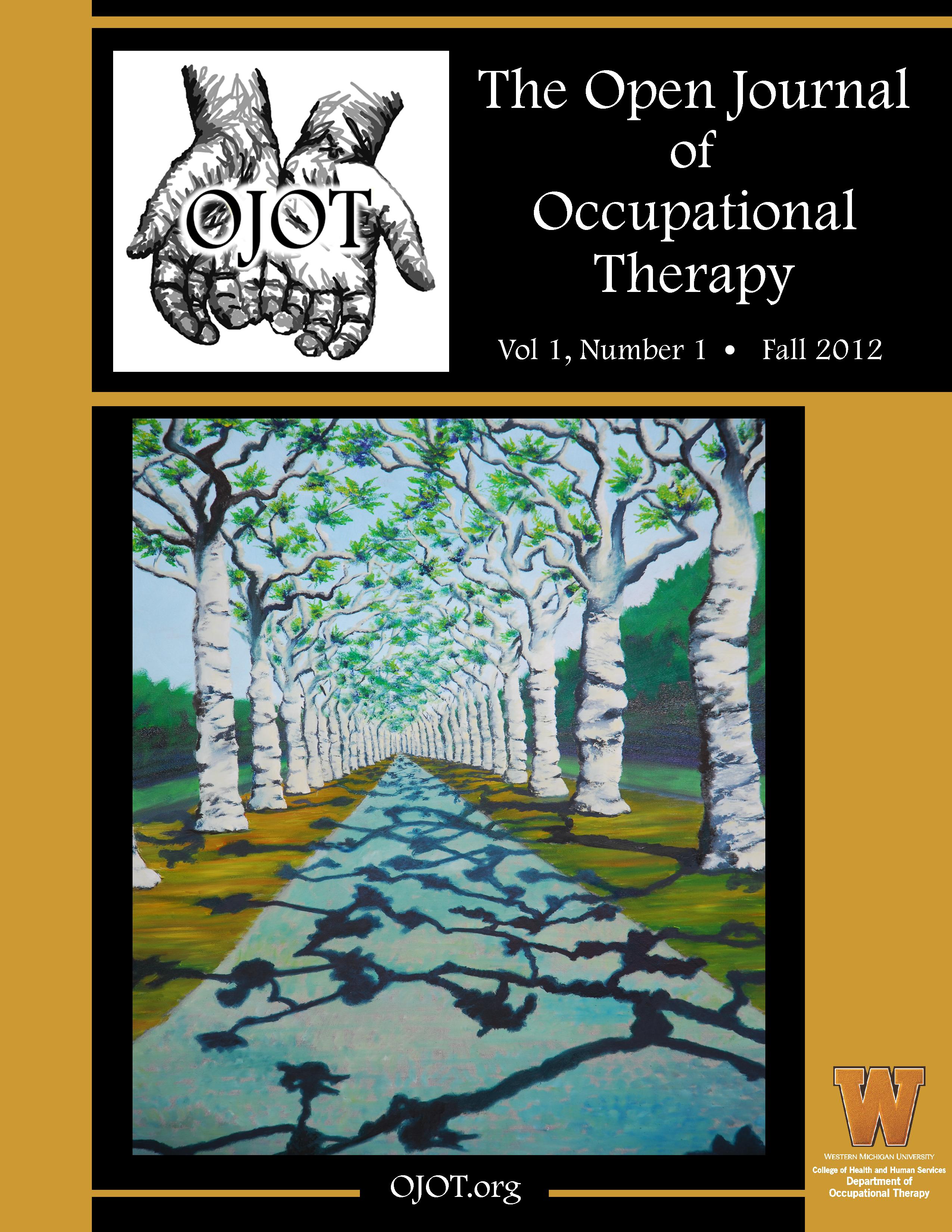ScholarWorks > HHS > OT > OJOT > Vol. 9 > Iss. 3 (2021)
Credentials Display
Sheryl Eckberg Zylstra, DOT, MS, OTR/L, BCP
Aimee Sidhu, OTD, MA, OTR/L
Abstract
Background: There is extensive literature to support the efficacy of both pediatric constraint-induced movement therapy (pCIMT) and hand-arm bimanual intensive therapy (HABIT) for children with hemiplegic cerebral palsy. In addition, there is increasing evidence to support the training of caregivers (parents and other care providers) to carry out therapy interventions in the home. The Family Activity Adaptation Model (FAAM) presents guidelines for parent and caregiver coaching for intensive therapies used in occupational therapy practice.
Method: In this descriptive case study the FAAM was used to frame caregiver training to answer the question: Is a coaching model, using a participant other than the primary caregiver, an effective intervention delivery method for intensive therapies for a 2-year-old with hemiplegic cerebral palsy? Outcome measures included the Canadian Occupational Performance Measure, Pediatric Motor Activity Log, Pediatric Evaluation of Disability Inventory, Goal Attainment Scaling, and grip strength and range of motion.
Results: The results demonstrated that gains were made on six of seven outcome measures, including both child performance outcomes and parent satisfaction measures.
Conclusion: Caregiver coaching using FAAM principles for intensive motor therapy intervention resulted in gains on a variety of outcome measures. Further research is needed.
Recommended Citation
Eckberg Zylstra, S., & Sidhu, A. (2021). Use of a Caregiver Coaching Model for Implementation of Intensive Motor Training for Hemiplegic Cerebral Palsy: A Case Study. The Open Journal of Occupational Therapy, 9(3), 1-11. https://doi.org/10.15453/2168-6408.1839



Comments
The authors report no potential conflicts of interest.